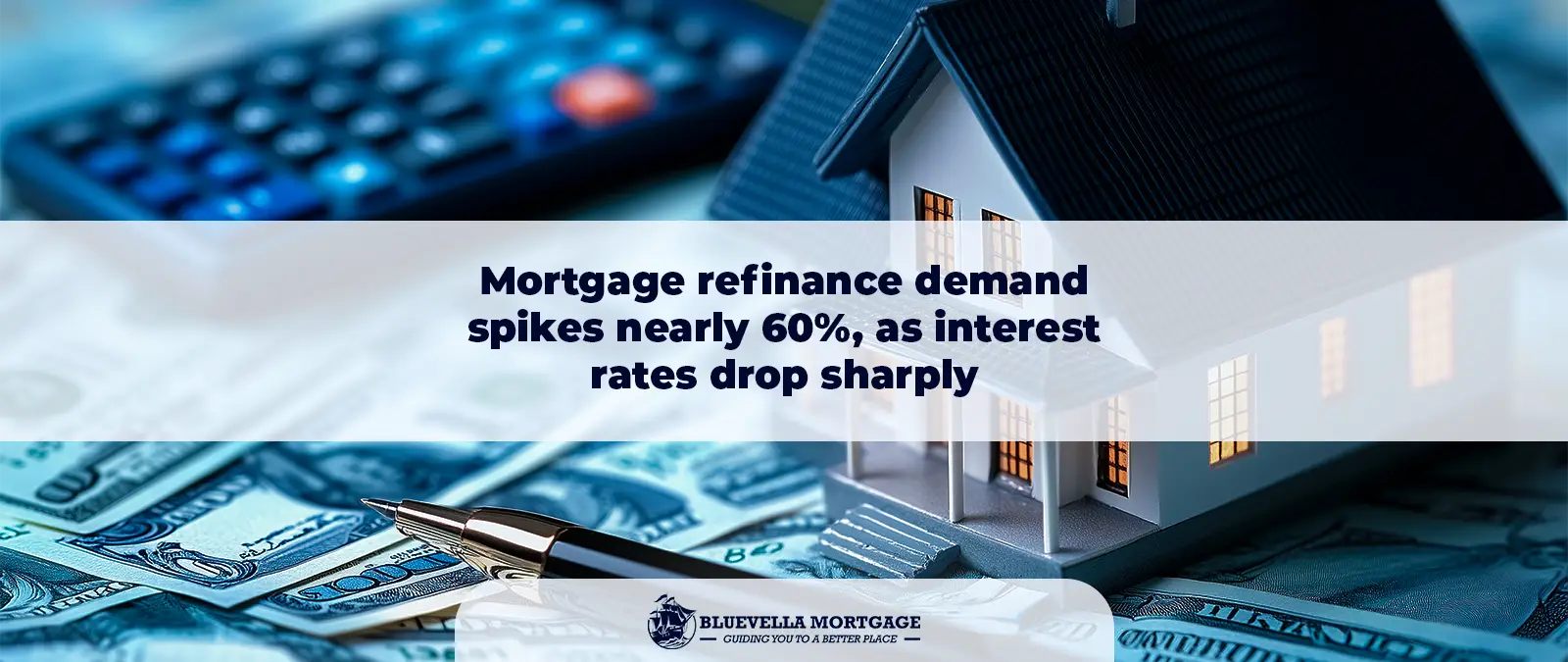
Home Sellers Cutting Prices at Record Pace
Introduction to the Real Estate Pricing Trends The real estate market is experiencing notable fluctuations in October 2025, characterized primarily by an unprecedented rate of

Introduction to the Real Estate Pricing Trends The real estate market is experiencing notable fluctuations in October 2025, characterized primarily by an unprecedented rate of

Introduction In October 2025, significant changes emerged in the housing sector as Fannie Mae and Freddie Mac announced that they would waive certain loan requirements

Introduction to the Surge in New Home Sales In August 2025, the real estate market saw a remarkable uptick in new home sales, reaching levels

Introduction to the Current Mortgage Landscape As of October 2025, the mortgage landscape has undergone significant shifts, reflecting notable economic influences and trends that have

Introduction to Federal Reserve Policies The Federal Reserve, often referred to as the Fed, serves as the central banking system of the United States and

Introduction to Fannie Mae and Its Role in the Housing Market Fannie Mae, formally known as the Federal National Mortgage Association, was established in 1938

Introduction: The Current Rental Landscape The rental market has undergone significant changes in recent years, influenced by various economic and social factors. As of recent

Introduction to Mortgage Applications Surge In September 2025, the housing market experienced an unprecedented surge in mortgage applications, marking the most significant increase since 2021.

Introduction to Mortgage Refinance Mortgage refinancing is a financial strategy that allows homeowners to replace their existing mortgage with a new one, typically with improved

Introduction to Mortgage Rates Mortgage rates refer to the interest charged on a mortgage loan, expressed as a percentage of the total loan amount. These

Introduction to the Real Estate Pricing Trends The real estate market is experiencing notable fluctuations in October 2025, characterized primarily by an unprecedented rate of price reductions among home sellers. This significant trend reflects the shifting dynamics of the housing market, influenced by various economic and social factors. A confluence

Introduction In October 2025, significant changes emerged in the housing sector as Fannie Mae and Freddie Mac announced that they would waive certain loan requirements due to a government shutdown. This decision is particularly noteworthy in light of its potential repercussions on the borrowing landscape and the real estate market

Introduction to the Surge in New Home Sales In August 2025, the real estate market saw a remarkable uptick in new home sales, reaching levels not witnessed in the past three years. This surge can be attributed to a variety of factors that have converged to create a favorable environment

Introduction to the Current Mortgage Landscape As of October 2025, the mortgage landscape has undergone significant shifts, reflecting notable economic influences and trends that have impacted homeowners across the nation. Over the past several months, mortgage payments have eased, providing much-needed relief to both current homeowners and prospective buyers. This

Introduction to Federal Reserve Policies The Federal Reserve, often referred to as the Fed, serves as the central banking system of the United States and plays a critical role in shaping the nation’s economic landscape. Through its monetary policy strategies, the Fed influences various economic factors such as inflation, employment,

Introduction to Fannie Mae and Its Role in the Housing Market Fannie Mae, formally known as the Federal National Mortgage Association, was established in 1938 as part of the New Deal to stimulate the housing market during the Great Depression. Its primary function is to enhance liquidity in the housing

Introduction: The Current Rental Landscape The rental market has undergone significant changes in recent years, influenced by various economic and social factors. As of recent statistics, nearly 60% of renters express a desire to transition to home ownership by September 2025. This desire stems from shifting motivations that include economic

Introduction to Mortgage Applications Surge In September 2025, the housing market experienced an unprecedented surge in mortgage applications, marking the most significant increase since 2021. This notable rise can be attributed to a combination of economic factors, shifts in consumer behavior, and evolving housing market trends. With current data indicating

Introduction to Mortgage Refinance Mortgage refinancing is a financial strategy that allows homeowners to replace their existing mortgage with a new one, typically with improved terms. This process can serve various purposes, including reducing monthly payments, shortening loan terms, or accessing home equity. Understanding the intricacies of mortgage refinancing is

Introduction to Mortgage Rates Mortgage rates refer to the interest charged on a mortgage loan, expressed as a percentage of the total loan amount. These rates play a crucial role in the housing market as they directly influence borrowing costs for homebuyers. When individuals seek to purchase a home, they